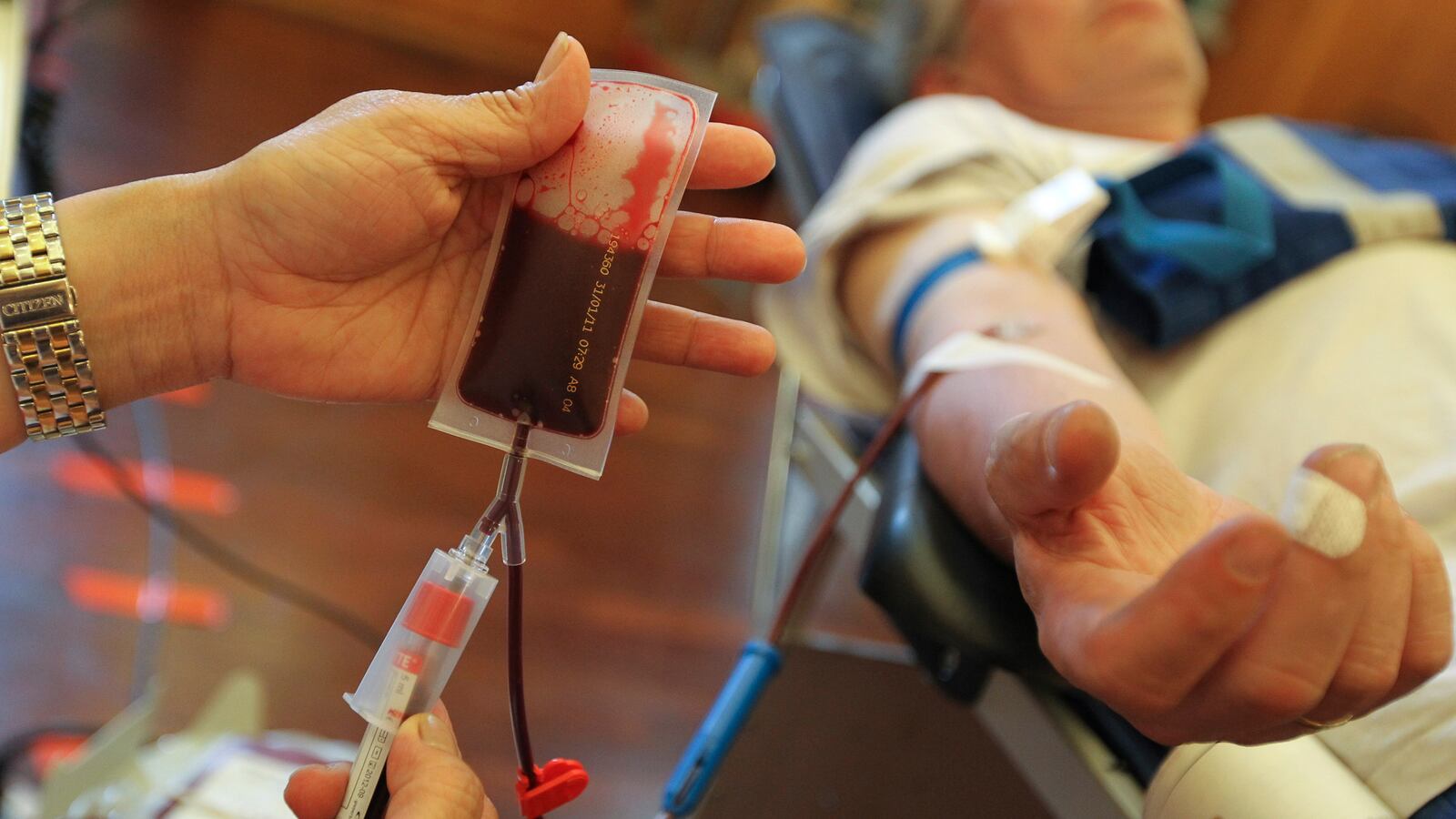In hospitals across the United States, people are getting sick and even dying from receiving transfusions of blood tainted with a known, epidemic-level parasite, and we’re still not testing either the blood supply or prospective donors for it.
Babesiosis has spread like wildfire through parts of the U.S., sickening those in the prime of their lives and sometimes even killing the weak, young, or elderly. Primarily spread by the bite of an infected tick, it’s a known hazard—one with symptoms regularly recognized in hot zones such as the Midwest or New England—and is starting to be mentioned right alongside Lyme’s Disease whenever ticks are brought up.
The symptoms read like a laundry list of hellish conditions. Severe anemia. Fever. Chills. Drenching sweat. Nausea. Vomiting. Shock. In extreme cases, even death.
“Extreme fatigue, and then I began running temperatures at night like 101, 102. And then I would get a night sweat,” one 63-year-old babesia victim, who preferred to remain anonymous, told The Daily Beast. After three weeks of worsening conditions, the Wisconsin-based farmer brought himself to the emergency room. It wasn’t until 21 days later, after massive doses of multiple antibiotics and a case of respiratory failure, that he finally left the hospital.
“I continued on that medication for about three months,” he said, noting that he was one of, if not the, first people in his state to contract babesiosis. “You have to continue the drugs. After I contracted it, other people picked it up in the state. And there were some that did not keep on the medication routine, and from what I understand they died because they didn’t take those mass doses of antibiotics.”
Babesia is the No. 1 transfusion transmitted infection in the U.S., a title it has held for years. And it has claimed at least 10 lives in the process.
A recent test of 115,000 blood donations from Minnesota, Wisconsin, and parts of New England showed about 460—or about four in 1,000—samples indicated babesia contamination. The testing is the lynchpin. Currently, there is no FDA-approved test for the parasite, though many are in development, meaning that blood collectors depend on a questionnaire to determine the safety of a donor.
The blood that was tested above was done so by tracking the DNA of the parasite.
Unfortunately many people are contaminated with a low level and may not know it, or may have been too recently exposed to be symptomatic, meaning simply asking them if they have or have had the parasite is a waste of time. Thus, the medical industry is sitting on a trove of potentially lethal blood, destined for individuals whose immune systems are likely already compromised by illness or trauma.
There is babesia-free blood available from the American Red Cross, but only hospitals in a couple states are ordering it. The reason so many choose to take a gamble with their patients’ well being? Money, of course.
“The problem is most hospitals don’t do that because it costs them an additional charge for us to do the testing,” Susan Stramer, the American Red Cross’ vice president of scientific affairs, said in a recent interview. “It really leaves the rest of the patient population vulnerable.”
This means that until the FDA mandates testing, or until they can be reimbursed for it from federal agencies, hospitals won’t incorporate screening blood for babesiosis as part of what Stramer calls their “standard of care.”
With babesiosis cases multiplying tenfold in just a few years and showing no signs of slowing, receiving a blood transfusion becomes an increasingly dangerous gamble. And it’s a gamble scientists have been warning us about since at least 2006.
And our aging Midwestern farmer?
“You know, I just don’t feel as well up to the scale as I did before I had it,” he says, then laughs. “But you have to remember I’m going from 63 years of age to 66 years of age, so it might be old age too.”






